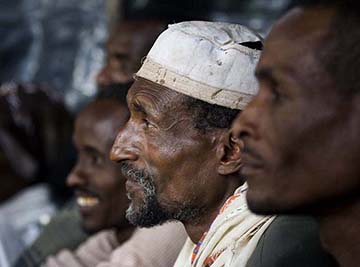Important Points to Remember When Storytelling

As a Bible storying trainer, I approach the subject of mistakes carefully. For missionaries, mistakes can lead to broken relationships, misunderstanding, and error in teaching. At the Asian Rural Life Foundation training center in the Philippines, the motto is: “We want to be the first to fail in order to learn, so you will not need to fail.” Failure for Bible storyers often results from falling into various traps that the missionary and non-missionary worker will want to avoid if at all possible. Below are some of the lessons I and others have learned over the years.
- Your interpretation of a story or expositional teaching from the Bible story is not as important or powerful as the story itself. This does not mean that neither interpretation nor exposition should be used. With pastors whom I have trained, I have provided scripture-based interpretations (letting scripture interpret scripture) and exposition as they were able to handle. But for the average listener, I have learned to trust the stories and to let the discovery activities be sufficient.
- Knowledge of local cultural and spiritual worldviews is vital. Fortunately, none of my gaffes were serious enough to break relationships. But I soon found that certain stories which were sensitive to worldviews really caught the attention of the listeners. This was how the story sets for women began to succeed. During my early days of storying, I learned that stories that worked well in the animistic cultural Christian worldview of the Philippines did not work as well with those of other Asian religions. Again, when local worldviews were taken into consideration, the stories began having greater impact. When I taught many stories, I noted that trainees selected certain stories for their use as these related intuitively to their people’s worldview.
- Test stories or items in stories that may hinder a receptive hearing. Some stories need to be contextualized or adapted in order to prevent initial rejection of the stories because of social or cultural taboos. This is because the listeners either did not understand first century culture or who Jesus was. Over the years, I have learned to carefully listen to what the oral learners did to stories when they retold them. This allowed me to see what they kept or changed in telling the story.
- Adequately prepare listeners for stories. For example, with the story of the prodigal son, the storyteller may get a response he or she did not expect: the father is the culprit in the story because he gave everything to his two sons. The older son is now head of the household; therefore, the father should have consulted the older son before welcoming the younger son back into the family. Another example is the story of Esau and Jacob. In a listener’s culture, the second twin born is evil and should not live. Yet God blesses the “evil” twin over the firstborn.
-
 Simplify stories. Since I had to work mostly through interpreters, I learned to simplify stories and be very careful about using names instead of pronouns in stories, especially those found in the four Gospels, which contain a good amount of dialogue. This way, my interpreters could correctly follow who said what to whom.
Simplify stories. Since I had to work mostly through interpreters, I learned to simplify stories and be very careful about using names instead of pronouns in stories, especially those found in the four Gospels, which contain a good amount of dialogue. This way, my interpreters could correctly follow who said what to whom. - Be patient. I learned to not assume anything, and to be very patient as even my interpreters sorted out story details. On one occasion, I was a bit exasperated because my interpreter kept asking for scripture references in order to see what his Bible said. When I challenged him to mark his Bible with passages we frequently used, he informed me that his people did not mark in holy books! I taught from a well-annotated chain reference Bible, but realized that, at times, I neede d to have a clean copy in case someone wanted to see my Bible. I also had to learn patience if an interpreter wanted to back up and correct an earlier mistake they made. This usually happened the first several times I worked with a new interpreter
- Oral learners are people just like us. In the early days of Bible storying, I believed what had been shared with me about oral learners: that they had a marvelous capacity to hear something once and remember it forever. I soon learned that was not true and had to learn the patience of retelling and repeating as often as needed, first to get the original understanding, then to correct or refresh stories that had drifted culturally, or were simply fading from lack of being exercised by telling often.
- Oral learners have a very practical memory system. They learn best what they consider to be practical information that either explains gaps in their knowledge or that is directly related to their everyday lives. While oral-learner pastors may ask theological questions, the average listener will be more concerned about matters relevant to his or her daily life. In most cases, then, the post-story discussion needs to be simple and not too heavily laden with facts since oral learners have to remember the facts as lists—a difficult task. Oral learners can tire easily if discussions are overly detailed and long.
- It takes time before understanding is reached. Among some listeners, discussion is initially difficult because listeners have not yet heard enough stories to begin to see the connection and direction of the stories. As the number of stories continues, there usually comes a tipping point, during which the stories begin to make sense and the larger picture begins to emerge. Never force discussion of the stories before the listeners are ready to talk.
- Tell Bible stories to the larger group if possible. If an individual is led to make a decision alone without the consent of his or her community, there is often hostility. Gather the larger community if possible to hear the stories as a group–this way they can be led as a group to the same invitation. That said, it is not uncommon for individuals to be present at Bible storying sessions and respond to the stories and then take the stories back to their people, or be the gateway to invite the Bible storyer to come and share the stories.
- Never go it alone in planning, selecting, and preparing stories for telling without bathing each step in prayer for wisdom, guidance, and patience.
 Here are two more points to consider:
Here are two more points to consider:
- In many places, true stories may only be told at a certain time and in a certain place. Several apocryphal stories have circulated about how missionaries have attempted to tell their stories without regard to knowing where sacred or true stories were to be told.
- Some younger Bible storyers whom I have trained have had difficulty getting their elders to listen. They were viewed as too young to teach their elders. We often got around this by giving the young storyers a set of teaching pictures that gave them credibility and a status that set them up as worthy to tell and teach their elders. On the other hand I also learned that giving pictures to all those being trained was expensive and limited the scope of the training due to the need to import large numbers of picture sets. My using pictures conveyed the message that the trainees needed to use pictures as well. On more than one occasion a former trainee reported that he had not told any stories since training because he did not have any pictures.
I’ll end with a personal account. For several years, a Tamil driver took me to the places where we were teaching the Bible stories. The driver was literate but had no formal theological training. One day, after being away for some time, I discovered that he had taught his wife and children to tell the Bible stories; the family then told their neighbors and planted a church.
After an absence of ten years I met him again. He was now pastoring a church that met in his home and still telling the Bible stories in his preaching and outreach. If I had it to do over, I would spend even more time training pastors and others who were willing to learn the stories, who lived among the people, and who caught the vision to tell the stories of Jesus until he returns.








comments